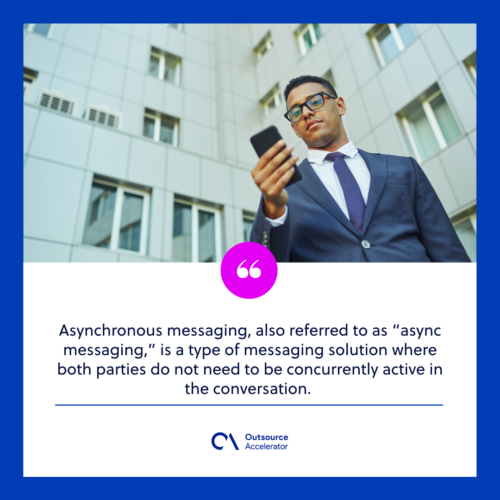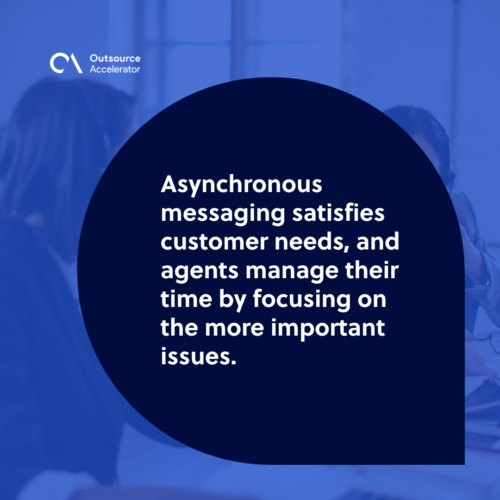Asynchronous messaging
Definition
What is asynchronous messaging?
Asynchronous messaging, also referred to as “async messaging,” is a type of messaging solution where both parties do not need to be concurrently active in the conversation.
The system places the sent message in a queue, and it does not require an immediate response to continue processing.
Example of asynchronous communication
Email, text messaging, and recorded audio and video are perfect examples of asynchronous messaging. These are transmitted messages where an immediate response is not required.

What are the benefits of asynchronous messaging?
Here are some of the benefits of asynchronous messaging for your business.
Convenient for customers
In asynchronous messaging, customers don’t have to wait for agents to respond immediately. Customers can leave messages and then come back once answers are provided by the appropriate agent.
With asynchronous messaging, customers don’t need to worry about their previous conversation with an agent since the message history is accessible.
Takes less time
Agents can solve issues with fewer transfers and followup questions since customers can ask all their questions ahead. While concerns are already displayed in the conversation, agents no longer have to ask again and can have a better understanding of the issues.
At this point, they can provide a comprehensive response without taking too much time going back and forth in the conversation.
Builds strong relationships
In asynchronous messaging, agents can view previous conversations and help identify additional support. Since customers reach out when it’s convenient for them, they’re more likely to open discussions and later on create new sales for the business.
Boosts agent productivity
Asynchronous messaging satisfies customer needs, and agents manage their time by focusing on the more important issues. This lowers customer attrition and boosts agent productivity.

Asynchronous vs. synchronous messaging
Another type of messaging solution is synchronous messaging. Synchronous messaging is a two-way communication and needs the people in the conversation to be concurrently active. Person A will need to send a message to person B before B gets to reply to A.
It is a communication method where the client waits for the server to respond to a message. Some examples would be text chats, online presentations, virtual classrooms, and instant messaging.







 Independent
Independent




